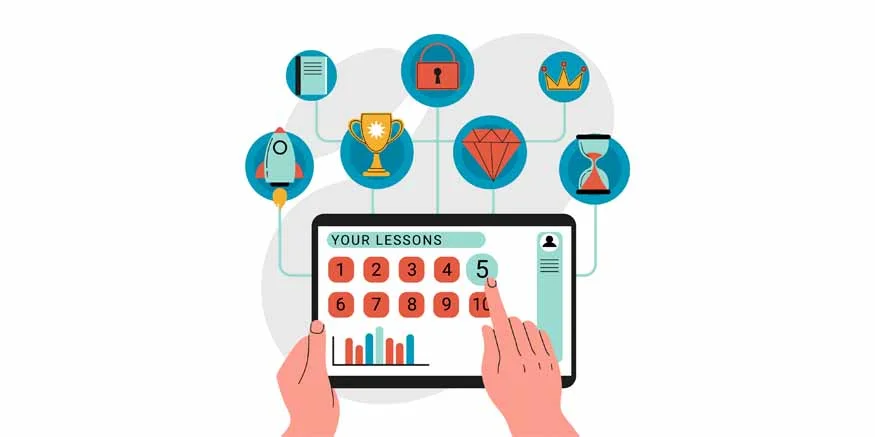Winning a game is always exciting, but have you ever wondered if there’s more to it than just luck? Whether you’re playing board games, drawing cards, or flipping a coin, there’s a hidden maths concept called probability that influences your chances. In this blog, we’ll explore how probability works in games and how it might just give you an edge the next time you play!
Probability isn’t about predicting the future, but it helps us understand the likelihood of different outcomes. It can answer questions like, “What are my chances of winning?” or “How likely am I to get the number I need?” Let’s dive into this fun mathematical adventure and learn how probability shapes the games we love!
What is Probability?
Probability is a way to measure how likely something is to happen—it’s all about chances. For example, when you flip a coin, there are two possible outcomes: heads or tails. Since both outcomes are equally likely, the probability of landing heads (or tails) is 50%.
The formula for calculating probability is simple:
Probability = Number of favourable outcomes / Total number of possible outcomes
Using this formula, we can calculate the likelihood of different events happening in games, from tossing coins to drawing cards or rolling dice.
Coin Toss: A 50/50 Chance
Let’s start with the simplest game—flipping a coin. A coin has two sides, so when you toss it, there are only two possible outcomes: heads or tails. The probability of landing heads is:
Probability = 1/2 = 50%
This means you have a 50% chance of getting heads and a 50% chance of getting tails. It’s a game of pure luck!
Rolling Dice: More Sides, More Outcomes
Dice games are a bit more complex because a die has six sides. When you roll a die, there are six possible outcomes. If you want to roll a 3, the probability would be:
Probability = 1/6 = 16.67% (approx)
You have about a 16.67% chance of rolling any specific number, making dice rolls unpredictable and fun. This element of surprise is why dice are often used in board games.
Drawing Cards: How Lucky Can You Get?
In a standard deck of 52 cards, if you’re hoping to draw an Ace, there are only four Aces in the deck. So, the probability of drawing an Ace is:
Probability = 4/52 = 1/13 = 7.7% (approx)
With only a 7.7% chance of picking an Ace, drawing one feels like a big win! Card games are exciting because they combine luck, skill, and probability.
Strategic Games: Mixing Skill and Chance
While some games rely purely on chance, like flipping coins or rolling dice, others involve a combination of skill and probability. Understanding probability can help you make smarter choices and increase your chances of winning.
Take Monopoly, for example. Players roll two dice to move around the board. The most common number to roll with two dice is 7 because there are six different ways to roll a 7 (1+6, 2+5, 3+4, etc.). The probability of rolling a 7 is:
Probability of rolling a 7 = 6/36 = 1/6 = 16.67% (approx)
Knowing that 7 is the most likely roll can help you plan your moves and make strategic decisions.
Sports and Lotteries: Probability in Real Life
Probability isn’t just for games—it’s used in real life too! In sports, for instance, teams use statistics to predict their chances of winning. If a basketball player has a 70% success rate at free throws, that’s probability at work. It helps coaches and players make better decisions during games.
Why Understanding Probability is Helpful
Now that you know how probability works, you might wonder how it helps in games. Here’s why it’s useful:
- Smart Decisions: In games like Monopoly or Uno, knowing the odds helps you make better moves.
- Managing Expectations: Understanding the chances of different outcomes can make you less surprised or disappointed.
- Fair Play: Probability shows whether a game is fair, ensuring everyone has an equal chance of winning.
Fun Probability Experiments at Home
If you’re excited to see probability in action, try these fun experiments:
- Dice Game: Roll two dice and see how often certain numbers come up. Compare your results with the predicted probabilities.
- Coin Toss Challenge: Flip a coin 100 times and check how close your results are to the 50/50 probability.
- Card Draws: Shuffle a deck of cards and predict how often you’ll draw a certain suit or number. The more you practise, the more you’ll understand how probability works!
Conclusion: Play the Game with Probability in Mind
Probability is everywhere in the games we play. Whether you’re rolling dice, drawing cards, or moving pieces on a board, understanding the chances of different outcomes can add a new layer of excitement. While luck always plays a role, knowing how probability works can help you feel more in control and make games even more fun.
So, next time you play a game, remember that it’s not just about winning—it’s about understanding the odds and having a great time. Who knows, maybe your new knowledge of probability will make you the champion of your next game night!
Good luck, and may the numbers be in your favour!









